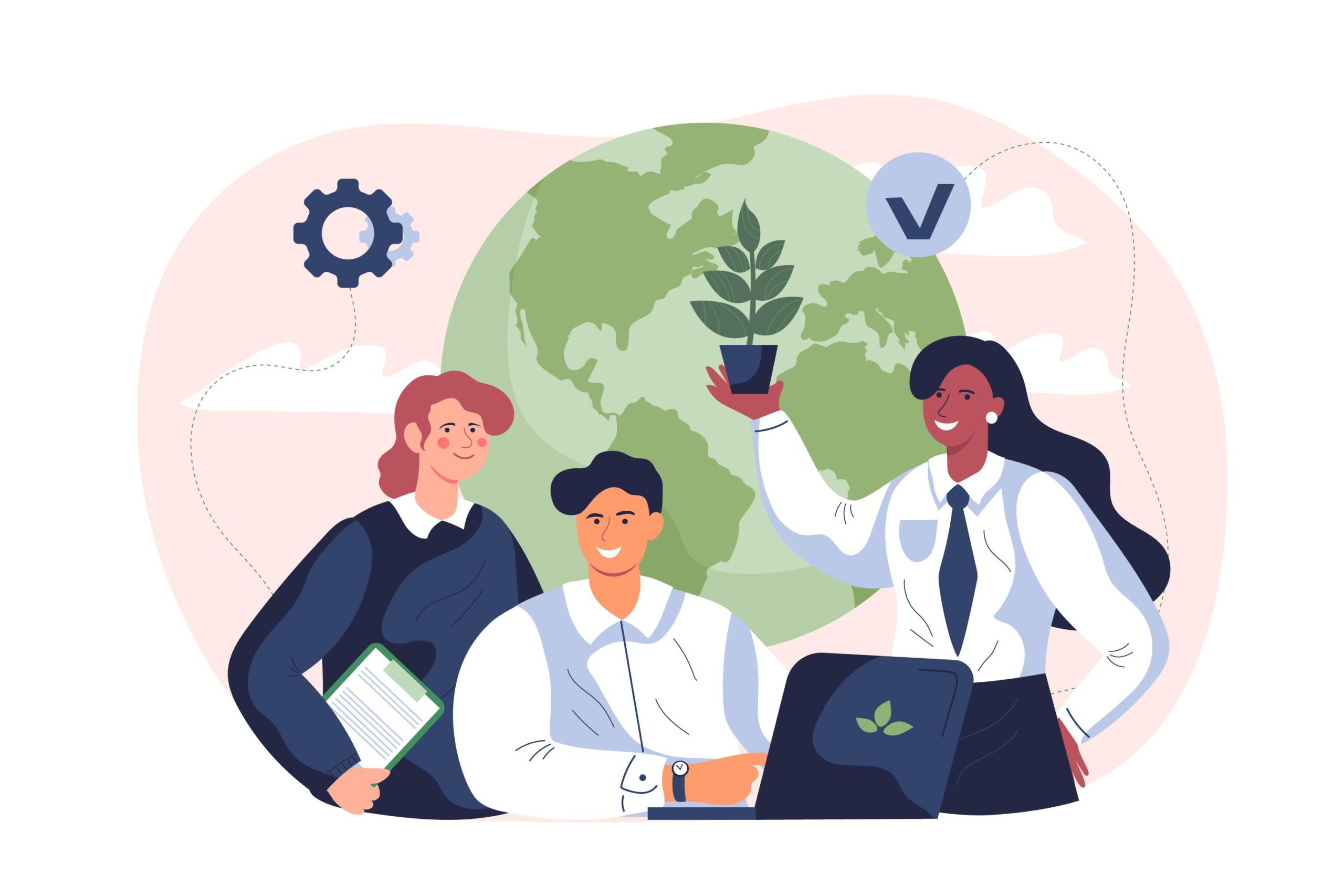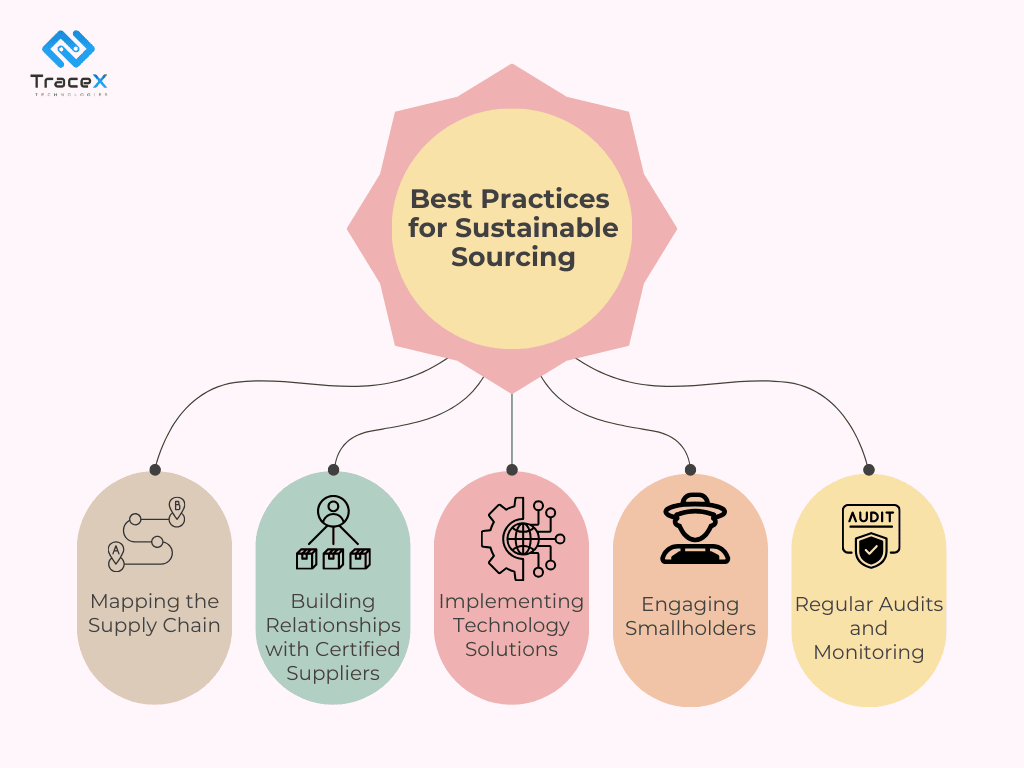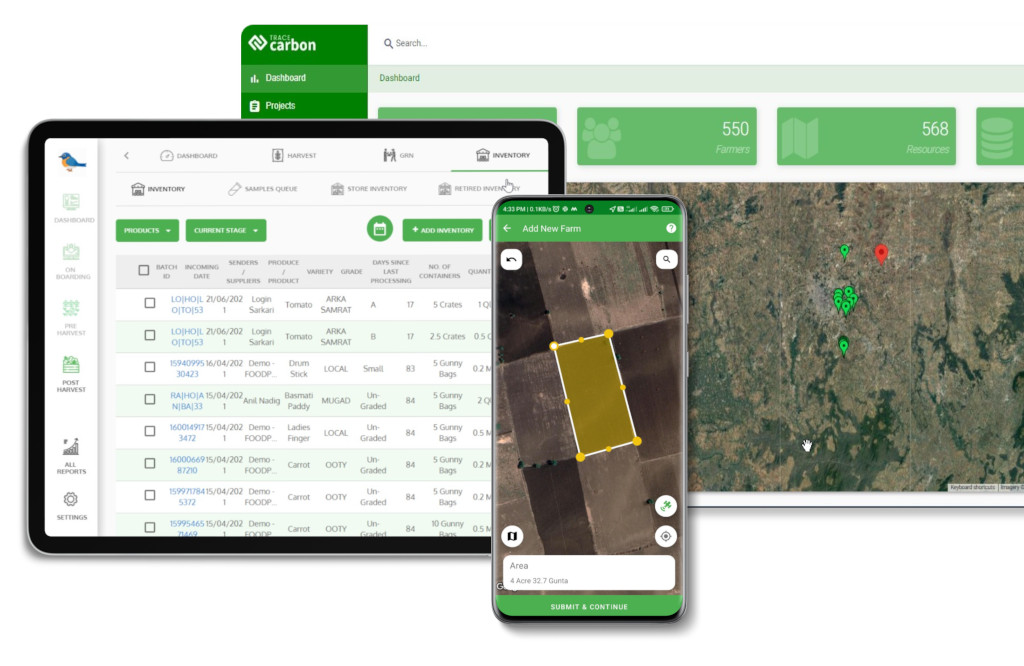Contact: +91 99725 24322 |
Menu
Menu
Quick summary: Discover how to ensure deforestation-free sourcing for EUDR compliance with traceability, supplier verification, and digital monitoring strategies. Stay compliant and sustainable.

Could your sourcing practices unknowingly lead to EU import bans? Businesses that fail to address deforestation in their supply chains face mounting risks—regulatory penalties, supply chain disruptions, and reputational damage. Consumers and investors increasingly demand deforestation-free sourcing, pushing companies to prove their commitment to sustainability.
Every year, 10 million hectares of forests disappear—an area roughly the size of Portugal—driven largely by agricultural expansion for commodities like soy, palm oil, and beef. The consequences? Rising carbon emissions, biodiversity loss, and disrupted ecosystems that fuel climate change.
The EUDR (EU Deforestation Regulation) is a game-changer. Set to take effect, it bans imports linked to deforestation after December 31, 2020, impacting businesses dealing in soy, palm oil, cocoa, coffee, beef, rubber, and wood. Compliance isn’t just a legal necessity—it’s a competitive advantage in a world shifting toward responsible sourcing. So, how can businesses ensure compliance while securing sustainable supply chains? Let’s dive into the essential strategies to achieve deforestation-free sourcing and future-proof your operations.
Key Takeaways
If your business deals with soy, palm oil, cocoa, coffee, beef, rubber, or wood, then the EU Deforestation Regulation (EUDR) is something you can’t afford to ignore. The regulation is designed to stop deforestation at the source, making companies accountable for where and how their products are produced. But what exactly does compliance look like?
The EUDR has a strict cutoff date—December 31, 2020. This means that any product entering the EU must not be sourced from land that has been deforested or degraded after this date, regardless of whether the deforestation was legal in the country of origin.
What this means for businesses:
The EUDR doesn’t just ask companies to promise they’re deforestation-free—it requires proof.
Why this matters:
If your supply chain lacks transparency, you risk being shut out of the EU market. Investing in digital traceability solutions and supplier partnerships is no longer optional—it’s essential.
Meeting EUDR standards means putting in place a solid due diligence system to prove compliance. This includes:
Risk Assessments:
Documentation & Reporting:
The more transparent and detailed your records, the easier it is to prove compliance and avoid potential penalties.
Penalties for Non-Compliance: The Risks of Getting It Wrong
The EU is taking deforestation seriously, and companies that fail to comply won’t get a free pass.
The takeaway? Compliance isn’t just about avoiding fines—it’s about securing your long-term market access and reputation.
EUDR compliance isn’t a one-time task—it’s an ongoing process. Businesses that embrace traceability, supplier collaboration, and digital monitoring tools will be ahead of the game. Now’s the time to act.
If your business is sourcing soy, palm oil, cocoa, coffee, beef, rubber, or wood, ensuring deforestation-free sourcing isn’t just a choice—it’s a necessity under the EU Deforestation Regulation (EUDR). But where do you start?
Before you can fix a problem, you need to know where the risks are. The first step is to analyze your supply chain and identify regions or suppliers that may be linked to deforestation.
Identify High-Risk Regions & Suppliers:
Use Geospatial Data & Land-Use Analysis:
Engage with Sustainability Consultants:
To meet EUDR requirements, you must prove where your raw materials come from. That means traceability is non-negotiable.
Use Satellite Imagery & Blockchain for Transparency:
Verify Farm Locations & Land-Use History:
Not all suppliers are created equal. To reduce your deforestation risk, work only with suppliers who meet sustainability standards.
Choose Certified Suppliers with Proven Sustainability Credentials:
Look for globally recognized certifications such as:
Conduct Supplier Audits & Enforce Sustainable Sourcing Policies:
EUDR compliance requires detailed reporting and ongoing monitoring—this is where automation and AI can help.
Maintain Detailed Documentation for Authorities:
Implement Automated Risk Monitoring Systems:
Use Compliance Software for Supply Chain Mapping:
EUDR isn’t just about preventing deforestation—it’s also about promoting better land-use practices. Businesses can go beyond compliance by investing in sustainability.
Support Agroforestry & Regenerative Agriculture:
Invest in Deforestation-Free Farming Practices:

Deforestation free sourcing, while essential for compliance with regulations like the EU Deforestation Regulation (EUDR), presents several challenges for operators and traders in the agribusiness sector. These challenges stem from the complexity of supply chains, the need for transparency, the cost implications, and the involvement of smallholder farmers.
For instance, a company sourcing coffee might have to trace the beans back through several intermediaries to the original farm. If that farm is in a remote area with little oversight, it becomes challenging to verify whether the beans were produced in a way that avoids deforestation. This complexity makes it harder for companies to guarantee that all their products meet sustainability standards, which is a critical requirement under the EUDR.
For example, a trader buying palm oil may receive it from a supplier who obtained it from various plantations. If the supplier doesn’t provide detailed information about where and how the palm oil was produced, the trader can’t be sure that it wasn’t sourced from land that was recently deforested. This lack of transparency poses a significant risk, as it can lead to non-compliance with the EUDR and damage the company’s reputation.
Balancing the need for sustainability with the need to remain profitable is a delicate act. Companies may find themselves in a difficult position where the costs of sustainable practices outweigh the financial benefits, at least in the short term. This challenge can be especially acute for smaller businesses that lack the resources to absorb these costs without impacting their bottom line.
Smallholder farmers often lack the resources, knowledge, and infrastructure to implement sustainable practices on their own. They may need access to better farming techniques, financial support, and tools to help them maintain sustainable land use. For operators and traders, working with these farmers requires a significant investment of time and effort. It involves providing education, resources, and support to help smallholders transition to more sustainable practices.
Furthermore, smallholders are often located in remote areas with limited access to technology and markets, making it harder to integrate them into transparent and traceable supply chains. Operators and traders must find ways to engage these farmers effectively, ensuring that their practices align with the sustainability goals of the entire supply chain.

Ensuring deforestation-free sourcing isn’t just about following regulations like the EUDR (EU Deforestation Regulation)—it’s about building a responsible, future-proof supply chain. But let’s be real: keeping track of every farm, supplier, and sourcing region can feel overwhelming.
Technology is making it easier than ever to monitor, verify, and manage supply chains—without breaking the bank. Let’s explore how businesses can use smart tech to stay compliant and sustainable.
Gone are the days when companies had to rely on manual land inspections to check if their sourcing areas were deforestation-free. Today, satellite technology gives businesses a real-time, bird’s-eye view of their supply chains.
How it works:
Why it’s a game-changer:
Example: A coffee company using satellite data can track its farms across Latin America and ensure no beans come from deforested land.
Ever wonder if the information you get from suppliers is 100% reliable? With blockchain, every step in the supply chain is recorded and verified, making it impossible to hide non-compliance.
How it works:
Why it’s a game-changer:
Example: A chocolate manufacturer can prove its cocoa is sourced from deforestation-free farms with blockchain-backed records.
Manually checking thousands of suppliers for deforestation risks isn’t practical. AI (Artificial Intelligence) can analyze massive amounts of data and detect high-risk suppliers in seconds.
How it works:
Why it’s a game-changer:
Example: A palm oil company using AI can automatically detect which suppliers are most likely to be non-compliant and take action before purchasing.
Under the EUDR, businesses must provide geolocation data for all raw materials—meaning you need to know exactly where your products come from.
How it works:
Why it’s a game-changer:
Example: A timber company can use geotagging on every log shipment to prove its wood isn’t from protected forests.
Navigating EUDR compliance can be complex, but TraceX’s EUDR Compliance Platform makes it simple, efficient, and hassle-free with its end-to-end digital platform for deforestation-free sourcing.
Geolocation & Traceability:
Real-Time Supply Chain Monitoring:
Blockchain-Powered Transparency:
EUDR-Ready Compliance Documentation:
Ensuring deforestation-free sourcing is no longer just an ethical choice—it’s a regulatory necessity under the EUDR. By leveraging technology-driven solutions like blockchain traceability, satellite monitoring, and supplier engagement strategies, businesses can build transparent, resilient, and compliant supply chains. Proactive measures today will not only help meet EUDR requirements but also enhance brand credibility and market competitiveness in an increasingly sustainability-conscious world.
Businesses can use geo-tagged farm mapping, satellite monitoring, and blockchain traceability to track land-use changes and ensure compliance with EUDR regulations.
Technologies like blockchain, GIS tools, and AI-driven monitoring help automate compliance tracking, ensuring transparency and real-time data collection.
Non-compliance can lead to penalties, product recalls, restricted market access, and reputational risks, making it crucial for businesses to implement robust due diligence systems.
